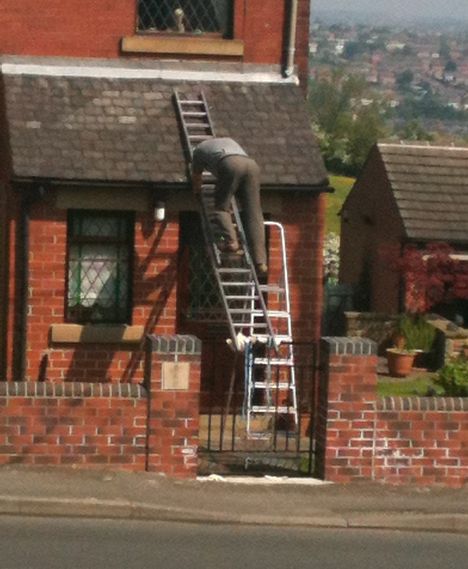Using any kind of static equipment for working at a height is hazardous and falls from even a relatively low height above the ground can be serious. With every foot above the ground the danger of serious accident or death increases and there is also an added risk of danger to those below. With adequate training for all those working at a height in this way as well as for those managing these projects, injuries can be minimised quite easily.
Safety on ladders
It is easy to become a little casual when working on ladders, especially if their use is a daily occurrence. Everyone is familiar with the ladder and most people have used one if only for some decorating or gardening task at home. This can mean that basic safety procedures tend to be forgotten and this can prove quite literally fatal.
Training courses for working on ladders are not usually more than half a day and any employer who is asking a worker to use a ladder, even if this is only infrequent, should make sure that everyone’s training is up to date. Basic rules such as never leaning over, stabilising any soft ground at the ladder’s base, provision of adequate warning signage and other simple procedures should mean that falls from ladders are a thing of the past.
Safety on towers
Towers in general are a much safer option than ladders or steps but as with all working at height, they do carry their own dangers nonetheless. Towers are often semi-permanent features in construction projects and are often up for years in warehouses or other tall buildings. This means that checking the tower is as important as any work that takes place on them but unfortunately this kind of simple maintenance is all too often overlooked.
Appropriate training will ensure that a correct checking log is maintained and that all elements of the tower are kept in peak condition. Staff should also be trained in troubleshooting and when to call off working on the tower should any problem arise. All staff have a responsibility of care to colleagues and so this training need not be limited to those who will be working on the tower itself but can be shared between people whose job keeps them on the ground as well.
Safety on steps
Steps are even more prone to being taken for granted than ladders, mainly because they tend to be shorter and used for more mundane purposes. Because they are free standing they are much more liable to accidents involving people working on the ground who can knock them over or walk underneath and be injured by something falling from above.
A general training programme for all staff who are likely to come in contact with working with steps is good practice for any business, because the use of steps is so wide – for changing a light bulb or for reaching down books and files, steps are almost always the first choice and most workplaces have at least one set – a maintenance log is essential here too, as they often are stored for a long while between uses.
Rob Steen is a freelance copywriter who specialises in health and safety subjects.



